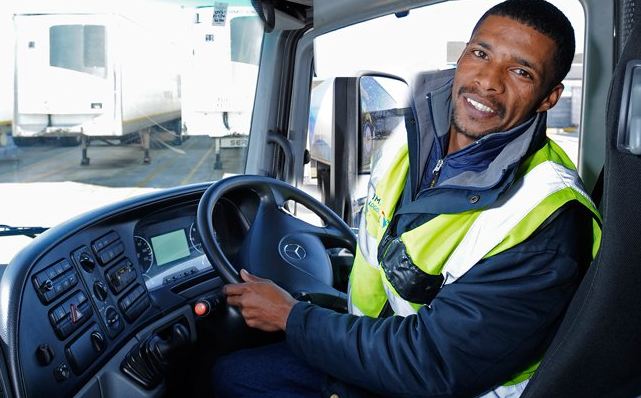When it comes to road safety, logistics and supply chain leader Imperial Logistics is uncompromising, and it is this stance that led to the group’s policy to install in-cab cameras in every truck in its fleet. According to Lucky Maluleke, HSE Executive of Imperial Logistics Group Company Tanker Services, the decision is already paying dividends.
“This is invaluable technology that is mitigating risks for Imperial’s clients, drivers, other road users and pedestrians,”he stresses.
Imperial’s in-cab camera initiative began in 2012, Maluleke reveals, when group company Tanker Services snapped up the new technology shortly after its launch, and began a project to install and test “DriveCam” in-cab cameras in its vehicles.
Imported from the USA, DriveCam is based on a dual lens in-cab video camera and reporting software. Through its two wide angle lenses, the camera records what is happening on the road ahead of the truck as well as in the cab. Its built-in gravity sensor ensures that footage is stored whenever the vehicle is subjected to forward or sideways movement beyond predefined parameters.
Following on from the success of Tanker Services’ pilot project, Imperial took the decision to install DriveCam in all of its trucks. Maluleke outlines the system’s purpose and operation:“It is used to determine whether the driver is driving responsibly on the road and comply with the safety rules that he learned from training. Basically, this system picks up any sudden vehicle movements and record the behaviour of the driver inside the cab and outside in front of the truck. The system is also used to manage “near miss” events and these can be communicated as lessons and shared with other drivers at safety forums. In addition, the driver can pro-actively, manually record an incident at any stage (loading point, offloading point and on-route) and management will immediately be alerted through the real time feed to our 24 hour control room. We are able to assess the situation and the driver, and take the necessary action, including additional driver training, where required.
”In the event of an accident, we will have footage prior to the accident and for a specified time afterwards. Imperial and our clients rely on this for investigation purposes.”
Maluleke notes that DriveCam has proved its worth in many instances, and cites several examples in which the technology revealed that driver error was not the cause of the collision. “After analysing the videos, it was discovered that in most cases reviewed, it was not the driver’s fault. Confusion and contradictory eye witness reports could be eliminated, and the correct remedial action is taken to improve safety.”
While state of the art technology like in-cab camera systems come at a price, Maluleke stresses that the benefits far outweigh the cost. While some organisations may expect transport companies to offer the safest, highest specification vehicles for the lowest price, he says that his experience has been of clients largely impressed with the technology and who recognise its benefits. “Ultimately, however, this is not about Rands and cents. It is about Imperial constantly striving for zero fatalities and investing in technology that can help us to achieve this goal,” he concludes.
Also view on the Arrive Alive website:
